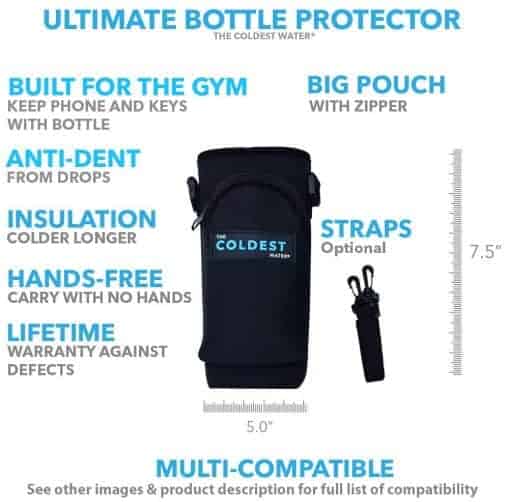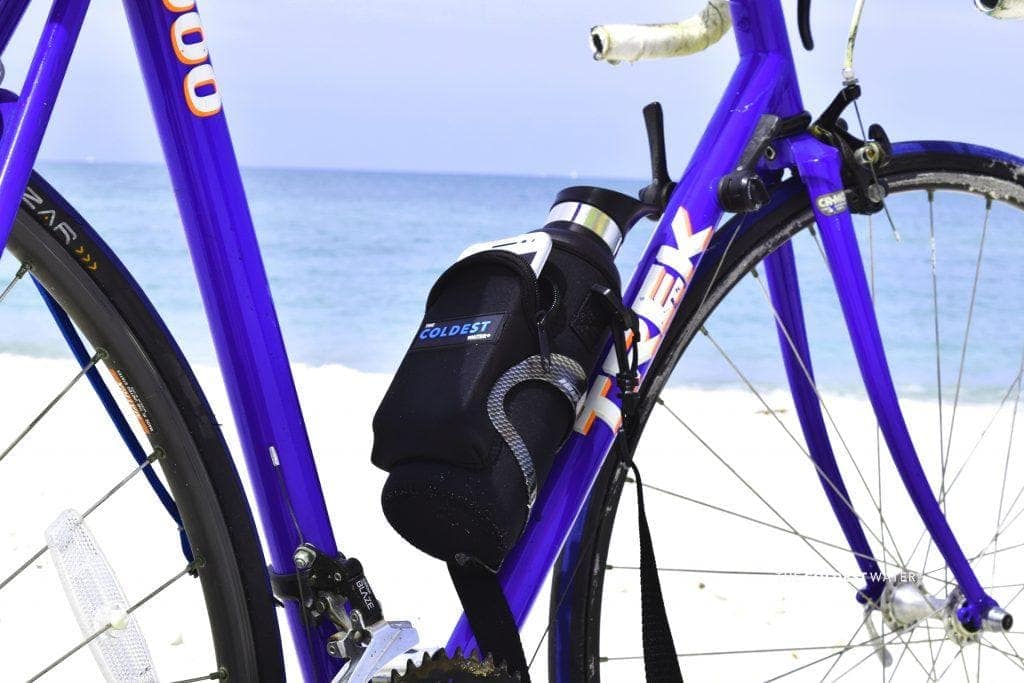How to Carry Water with You Daily and Stay Hydrated
How to Carry Water with You Daily and Stay Hydrated
Nothing is more natural than being thirsty during exercising. After all, our body has a crucial need for water to function properly and survive. No matter if you are running, pedaling or climbing, it is crucial to stay hydrated enough. The task is not always simple.
Carry Water during Your Workouts:
Each bike is usually equipped with a handy stand where to install your water bottle. When hiking, you will usually carry a backpack to store one or two water bottles … But how to conveniently carry water during a race session?
Running along with a bottle of water in the hand may seem the right solution, but in reality, the technique is not as practical as it is thought. It may be difficult to get a sound grip if the water bottle is big or the hands start to sweat. In addition, running with too much or too much water can be distracting and detrimental to your technique. Some running sessions are fast enough for you to hydrate properly before the start and after completion. But this is definitely not the case each time. If you run a marathon, for example, or on a mountain trail, you must hydrate permanently that means carrying the water is necessary with you.
Read More: Hydration: Well Hydrate Yourself with 7 Things to Know
SHOP NOW
Practical and Effective Methods:
Innovations and the latest technologies offer several benefits to the runners, and recent methods of carrying water are much more practical and interesting than in the past.
Thus, several options are available to you; either you are going to a run a marathon or short race. You are an experienced runner or even a beginner. Racing belts fitted with a holder for the water bottle, light hydration packs or hydration vests discover the option that suits you best. All of these choices allow you to easily access a water supply during your race while keeping the hands free for you to concentrate on your own technique.
Running with Hydration Belt:
Some people may find it stuffy or uncomfortable to run with a hydration jacket or pack. For them, a hydration belt with the coldest bottle 21oz is the perfect solution. However, it may take a little time to adapt. Do not despair, you will quickly find a comfortable position to install the belt without hindering your race. Once properly it is properly installed, no question of going out running without wearing it.
Read More: 5 Ways to Prevent Muscle Cramps in a Cycling Race
Here are some Tips to Find the Perfect Fit:
First and the main thing is to slip your sweater into your pants or leggings. Forget your style objections; this is the best way to prevent the fabric from making uncomfortable creases or blocking contact to the coldest bottle.
When you are tying the belt around the waist, make sure to set it around your waist and not on your hips. In case, this belt is on the lower side, it will not only be uncomfortable but will hinder your movements.
Tighten the belt so that it wraps around you fairly tightly. No way to run equipped with hydration belt bouncing against your legs.
Finally, all you have to do is refill your coldest bottle with fresh water and run at full speed!
Running with a Water Bottle Sleeve 21 oz (hydration pack)
The three things that must be taken into account when buying a hydration backpack are the volume, design and technical elements.
Read On: Raise Your Water Bottle to stay Hydrated in Honor of Your Running Success

SHOP NOW
Volume:
In general, it is recommended to buy a Water Bottle Sleeve that can hold 21 oz Bottle Sleeve, 32 oz Bottle Sleeve, and 64 oz Bottle Sleeve.
Design:
In terms of design, two words are kings: comfort and fit. Try the bottle sleeve and make sure you move around a bit to see how it is.
Technical Elements:
Hydration packs are extremely common for runners traveling to remote areas, where access to water is rather difficult. Most of the hydration packs contain a pocket to store a water tank, plus a few extra pouches that will house energy packs, and other snacks to give you the energy you need.
A small safety pouch is also very practical for the hydration bag since it will allow you to keep your keys, a little change, with your cards.
Running with Hydration Jacket:
The hydration jackets are quite similar to the bags seen previously, although they are generally lighter and, most importantly, closer to the body. Since they are more intimate with your face, they tend to hold better. In addition, the weight of what you carry will not be supported solely by your back, unlike hydration bags.
On the contrary, hydration jackets are designed so the weight is distributed evenly. So you carry your water, snacks and all your personal items without feeling heavy.
Most hydration jackets include water bottles in front pouches, but some jackets also have hydration systems.
Read More: Water Bottle for Kids 2019 with Lasting Durability and Supreme Quality

SHOP NOW
Water Bottle VS hydration Tank:
As with anything, when it comes to making a choice, each option has its benefits and disadvantages. Some runners will prefer to use jackets with coldest bottles, others with water tanks. In the end, the important thing is to choose what you think is right for you.
If you’re still a beginner and you’re not sure what’s right for you, here’s a small picture of the benefits and drawbacks that could make your life easier.
Hydration Tank:
Among the main advantages of reservoirs, there is the possibility to hydrate with your hands-free. This will allow you to focus more on your technique and the path ahead. Disadvantages are as you have to remove from your vest or bag to fill it and you will not have it coolness in water.
Bottle of Water:
The benefits of water bottles include not having to take off your jacket or whenever you want to refuel, as well as the ability to carry two different liquids. Most of the waist hydration belts and jackets accommodate two water bottles; you can easily fill one with cold water and the 2nd with another drink.
Gear up for the race



















